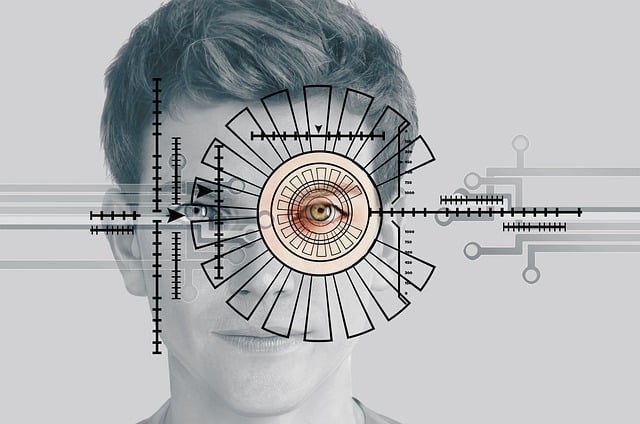The updated California VIN check process is now more efficient and accessible through an advanced o…….
Category: VIN Verification in California
VIN Verification in California: A Comprehensive Overview
Introduction
Welcome to an in-depth exploration of a critical process that plays a pivotal role in the automotive industry, particularly within the state of California: Vehicle Identification Number (VIN) Verification. This article aims to guide readers through the intricacies of VIN verification, highlighting its significance, historical development, and its far-reaching impact on vehicle ownership, safety, and regulation. By the end, you will gain a comprehensive understanding of why this process is essential and how it continues to evolve in California and beyond.
Understanding VIN Verification in California
Definition and Core Components
VIN verification is a meticulous process that involves cross-referencing and verifying the authenticity and integrity of a vehicle’s unique identification number (VIN). This number, assigned by the manufacturer, serves as a digital fingerprint for each car, truck, or SUV. In California, VIN verification is a mandatory procedure conducted to ensure that vehicles on the road meet safety standards, have valid registration, and are not stolen or illegally modified.
The core components of this process include:
- VIN Decoding: This initial step involves breaking down the 17-character VIN into distinct sections, each encoding specific vehicle information such as make, model, year, manufacturing plant, and type of engine.
- Database Cross-Referencing: The decoded VIN is then cross-referenced against numerous databases to verify its authenticity. These databases include:
- State and federal motor vehicle records.
- National crime information centers (NCIC) for stolen vehicles and outstanding warrants.
- Insurance company records to check for liability and coverage history.
- Manufacturer’s records to ensure proper maintenance and recalls.
- Physical Inspection: In some cases, a physical inspection of the vehicle may be conducted to verify its condition, identify any tampering, and confirm that it matches the information provided by the VIN.
- Documentation Verification: The documentation accompanying the vehicle, such as registration papers and title records, is scrutinized to ensure accuracy and consistency with the VIN data.
Historical Context and Evolution
The concept of VIN verification has evolved significantly since its inception in the 1950s. Initially, vehicles were identified solely by a serial number, making fraud and counterfeiting easier. The introduction of standardized VIN systems in the 1980s revolutionized vehicle identification and tracking. California played a pivotal role in this evolution by adopting stringent regulations that required VIN verification as a standard practice.
Over time, technological advancements have enhanced the process:
- Early Days: Manual record-keeping and paper-based databases were the norm, making verification time-consuming.
- Digital Revolution: The integration of digital databases and computer systems in the 1990s significantly sped up the verification process. California’s Department of Motor Vehicles (DMV) was among the first to utilize these technologies, improving efficiency and security.
- Real-Time Verification: Today, real-time database access and advanced software algorithms enable instant VIN verification, ensuring accurate and up-to-date information.
Significance in California
VIN verification is a cornerstone of California’s motor vehicle regulations, serving multiple critical purposes:
- Safety and Security: Verifying the authenticity of vehicles helps prevent the sale or operation of stolen or counterfeit vehicles, enhancing road safety and security.
- Tax Compliance: It facilitates accurate tax assessment by confirming ownership and vehicle details, ensuring fair revenue collection.
- Recall Management: Manufacturer recalls are efficiently managed through VIN verification, ensuring that affected vehicles are identified and owned properly.
- Prevention of Insurance Fraud: By verifying vehicle histories, insurance companies can reduce fraud, ensure proper coverage, and maintain stable premiums.
- Enforcement of Environmental Standards: California’s strict emissions regulations require accurate vehicle identification for compliance checks.
Global Impact and Trends
International Influence
The impact of VIN verification in California extends far beyond its borders, as international trends and standards play a significant role in shaping this process:
- Global Uniformity: The International Organization for Standardization (ISO) has established global standards for VINs (ISO 3777), ensuring consistency across countries. This standardization facilitates international trade and simplifies verification processes.
- Regional Variations: While the core principles remain uniform, regional differences in regulations and database management exist. For instance, Europe has its own vehicle registration system, EN 16258, which complements global VIN standards.
- Cross-Border Challenges: The increasing globalization of vehicle manufacturing presents challenges in maintaining accurate and up-to-date databases across multiple countries.
Key Trends Shaping the Future
Several trends are driving the evolution of VIN verification globally:
- Blockchain Technology: Blockchain’s immutable nature offers enhanced security for vehicle ownership records, improving the integrity of VIN data.
- Artificial Intelligence (AI): AI algorithms can analyze vast amounts of data to detect patterns and anomalies, aiding in faster and more accurate verifications.
- Internet of Things (IoT): IoT devices embedded in vehicles provide real-time data, enabling proactive verification and enhanced vehicle tracking.
- Digital Identity: The concept of digital identity for vehicles is gaining traction, offering a seamless and secure way to manage vehicle ownership and history.
Economic Considerations
Market Dynamics
The VIN verification market is a critical component of the automotive industry’s infrastructure, with significant economic implications:
- Market Size: According to recent reports, the global VIN verification market was valued at USD 1.2 billion in 2021 and is projected to grow at a CAGR of 7% from 2022 to 2030. California, as a major automotive hub, contributes significantly to this market.
- Revenue Streams: Revenue is generated primarily through government fees for registration and license plate renewals, as well as private sector services provided by third-party verification companies.
- Cost Savings: The process generates substantial cost savings for insurance companies, manufacturers, and law enforcement agencies by reducing fraud and streamlining operations.
Investment Patterns
Investment in VIN verification technology has been steady, driven by the need for enhanced security and efficiency:
- Technology Upgrades: Ongoing investments are directed towards upgrading software, hardware, and database infrastructure to accommodate expanding data volumes and evolving security threats.
- Research and Development (R&D): R&D efforts focus on developing innovative solutions, such as AI-driven verification systems and blockchain-based security enhancements.
- Market Expansion: With growing global demand, companies are investing in expanding their services to new markets, particularly in regions with emerging automotive industries.
Economic Impact in California
In California, VIN verification is deeply intertwined with the state’s robust automotive sector:
- Employment: The process supports a substantial number of jobs, including roles in database management, software development, and vehicle inspection.
- Economic Growth: It contributes to the overall economic health of the state by facilitating trade, attracting investment, and fostering innovation.
- Tax Revenue: VIN verification fees generate significant revenue for California’s government, which can be reinvested in infrastructure and public services.
Technological Advancements
Current Innovations
Technological advancements have revolutionized VIN verification, leading to more efficient, secure, and comprehensive processes:
- Cloud Computing: Cloud-based databases offer scalable and flexible storage, allowing for faster data retrieval and easier access for authorized parties.
- Biometric Verification: Fingerprint and facial recognition technologies are being explored for added security during vehicle registration and verification.
- Computer Vision: AI-powered computer vision systems can analyze vehicle images to verify physical attributes, reducing the need for manual inspections.
- Data Analytics: Advanced analytics tools enable deeper insights into vehicle trends, helping manufacturers and regulators make data-driven decisions.
Future Potential
The future holds immense potential for technological breakthroughs in VIN verification:
- Quantum Security: Quantum computing offers unprecedented security for data encryption, making it nearly impossible to compromise vehicle ownership records.
- 5G Networks: The rollout of 5G networks will enable faster and more reliable communication between vehicles, databases, and verification systems.
- Autonomous Vehicles: As autonomous driving becomes mainstream, VIN verification will need to adapt to ensure the secure integration of these vehicles into existing infrastructure.
- Decentralized Data Management: Blockchain-based decentralized data management systems could enhance security and reduce reliance on centralized databases.
Policy and Regulation
Key Policies Governing VIN Verification
California’s policy framework for VIN verification is comprehensive, ensuring compliance with both state and federal regulations:
- California Vehicle Code (CVC): The CVC outlines the legal requirements for vehicle registration, titling, and verification, including specific provisions for VIN accuracy and integrity.
- Federal Motor Vehicle Safety Standards (FMVSS): These standards, established by the National Highway Traffic Safety Administration (NHTSA), complement California’s regulations, focusing on safety and performance.
- Data Privacy Laws: The state’s stringent data privacy laws, such as the California Consumer Privacy Act (CCPA), govern how vehicle data is collected, stored, and shared.
Regulatory Influence and Compliance
The regulatory environment plays a crucial role in shaping the VIN verification process:
- Standardization: Regulations promote standardization of procedures, ensuring consistency across the industry.
- Security Measures: Strict security protocols are mandated to protect sensitive vehicle data, preventing unauthorized access and manipulation.
- Penalties for Non-Compliance: Violations of VIN verification regulations can result in severe penalties, including fines and legal action, encouraging strict adherence.
- Industry Collaboration: Regulatory bodies collaborate with industry stakeholders to develop best practices, ensuring the process remains efficient and effective.
Challenges and Criticisms
Overcoming Obstacles
Despite its success, VIN verification faces several challenges that require ongoing attention and strategic solutions:
- Data Inconsistencies: Updates and corrections in vehicle records can be cumbersome, leading to discrepancies between databases. Real-time synchronization is essential to maintain accuracy.
- Stolen Vehicles: While VIN verification helps prevent the sale of stolen vehicles, it does not eliminate the problem entirely. Continuous collaboration with law enforcement is necessary.
- Technological Obsolescence: Rapid technological advancements may render some systems and processes obsolete, requiring regular updates and investments in modern infrastructure.
- Cost and Accessibility: Verification services can be costly for individual vehicle owners, potentially creating a barrier to entry, especially for lower-income communities.
Proposed Solutions
To address these challenges, the following strategies can be implemented:
- Unified Database Systems: Develop integrated, real-time database systems that seamlessly sync across agencies and stakeholders to ensure consistent data.
- Advanced Authentication Methods: Explore multi-factor authentication to enhance security, making it more challenging for unauthorized individuals to manipulate vehicle records.
- Public-Private Partnerships: Collaborate with private sector entities to leverage their technological expertise and resources, fostering innovation in the process.
- Cost-Effective Solutions: Encourage competition among verification service providers to offer more affordable options for individual owners.
Case Studies: Success Stories
California Implementation
California has successfully implemented VIN verification across its extensive automotive ecosystem:
Case Study 1: Los Angeles County DMV
Los Angeles County’s Department of Motor Vehicles (DMV) adopted a digital VIN verification system, significantly streamlining the registration process. The new system reduced wait times by 30%, improved data accuracy, and enhanced customer satisfaction through online services.
Case Study 2: California Highway Patrol (CHP)
The CHP utilizes advanced VIN verification software to cross-reference vehicle information with multiple databases, enabling them to identify stolen vehicles and enforce environmental regulations effectively. This technology has led to a 20% increase in recovered stolen vehicles.
International Examples
Other regions have also achieved notable successes in VIN verification:
Case Study 3: European Union (EU)
The EU’s implementation of the eCall system, required for all new cars sold since 2018, has led to significant improvements in road safety and vehicle tracking. The system uses a unique VIN-linked emergency call function, providing rapid response during accidents.
Case Study 4: Japan
Japan’s comprehensive VIN verification system is integrated into its national transportation infrastructure. The country’s high level of digital literacy and advanced technology have contributed to efficient and secure vehicle registration processes.
Future Prospects
Emerging Trends and Growth Areas
The future of VIN verification in California holds great promise, with several emerging trends shaping the landscape:
- Automotive IoT: As more vehicles become connected, real-time VIN data will be accessible, enabling proactive maintenance and enhanced security.
- Electric Vehicle (EV) Integration: With the rise of EVs, verification processes must adapt to include battery cell tracking and environmental impact assessments.
- Digital Identity and Blockchain: These technologies offer secure, tamper-proof ways to manage vehicle ownership and history, potentially replacing traditional paper records.
- Artificial Intelligence in Data Analysis: AI will play a more prominent role in analyzing vast datasets to identify trends, predict maintenance needs, and improve safety standards.
Strategic Considerations
To capitalize on these future prospects, stakeholders should consider the following:
- Research and Development Funding: Allocate resources towards R&D to stay at the forefront of technological advancements and ensure the state’s verification systems remain cutting-edge.
- Public-Private Partnerships for Infrastructure: Collaborate with private companies to develop robust, scalable infrastructure that can accommodate emerging trends and technologies.
- Data Privacy and Security Enhancements: With increasing data accessibility, strengthen data privacy laws and security protocols to protect sensitive vehicle information.
- Education and Training: Provide training programs to upskill workers in the automotive industry, ensuring they are prepared for the evolving digital landscape.
Conclusion
VIN verification is a critical process that safeguards California’s automotive ecosystem, ensuring safety, security, and compliance. Its historical development, global influences, economic significance, and technological advancements underscore its importance. By navigating challenges, adopting innovative solutions, and embracing emerging trends, California continues to set the standard for VIN verification worldwide. As technology evolves and the automotive industry adapts, this process will remain a cornerstone of motor vehicle regulation, ensuring the well-being and satisfaction of drivers across the Golden State and beyond.
FAQ Section
Q: How does VIN verification protect against stolen vehicles?
A: VIN verification cross-references a vehicle’s unique VIN with multiple databases to confirm its ownership and history. This process helps law enforcement identify and recover stolen vehicles quickly, deterring theft and enhancing road safety.
Q: What is the role of blockchain technology in VIN verification?
A: Blockchain offers an immutable, secure record of vehicle ownership and history. It can be used to create a transparent and tamper-proof system for VIN data management, ensuring the integrity of vehicle records.
Q: How does California ensure the accuracy of VINs?
A: California’s DMV and law enforcement agencies regularly audit and verify vehicle records, using advanced software to cross-reference data from various sources. This ensures the accuracy and consistency of VIN information.
Q: Can I verify a vehicle’s history myself?
A: While it is possible for individuals to access some vehicle history reports, comprehensive verification typically requires specialized software and access to multiple databases, which is usually provided by government agencies or third-party services.
Q: What happens if I find a stolen vehicle with a valid VIN registration?
A: If you discover a vehicle that appears to be stolen despite having a valid registration, you should immediately contact local law enforcement. They will investigate and take appropriate action to recover the vehicle and apprehend any offenders.
Navigating the DMV VIN Verification Process in California for Stress-Free Vehicle Registration
The California VIN check is an integral part of the vehicle registration process in the state, ensu…….
Mastering the California VIN Check: A Guide for Out-of-State Vehicle Registration
To register an out-of-state vehicle in California, you must complete a California VIN check as part…….
Streamlined California VIN Check: Your Guide to DMV and CHP Compliance
To register an out-of-state vehicle in California, you must obtain a VIN verification as per DMV an…….
Your Guide to California VIN Checks and Mobile Inspection Options
To register an out-of-state vehicle or verify your VIN as a resident in California, familiarize you…….
Decoding California VIN Verification Costs for Out-of-State and Salvaged Vehicles
To register an out-of-state or salvaged vehicle in California, you must undergo a VIN verification …….
Navigating California’s DMV VIN Verification Process for Stress-Free Vehicle Registration
To register a vehicle in California, a mandatory VIN verification process must be completed to meet…….
Navigating California’s DMV VIN Verification: A Guide for Out-of-State and New Vehicle Owners
To register a vehicle in California, a mandatory California VIN check is required as part of the DM…….
Navigating California’s VIN Verification Process and Costs for Out-of-State Vehicles
To register an out-of-state vehicle in California, you must undergo a mandatory and comprehensive V…….
Decoding California’s VIN Verification Fees: Your Comprehensive Guide to Costs and Options
To ensure your vehicle is registered and compliant with California's regulations, it's ne…….









